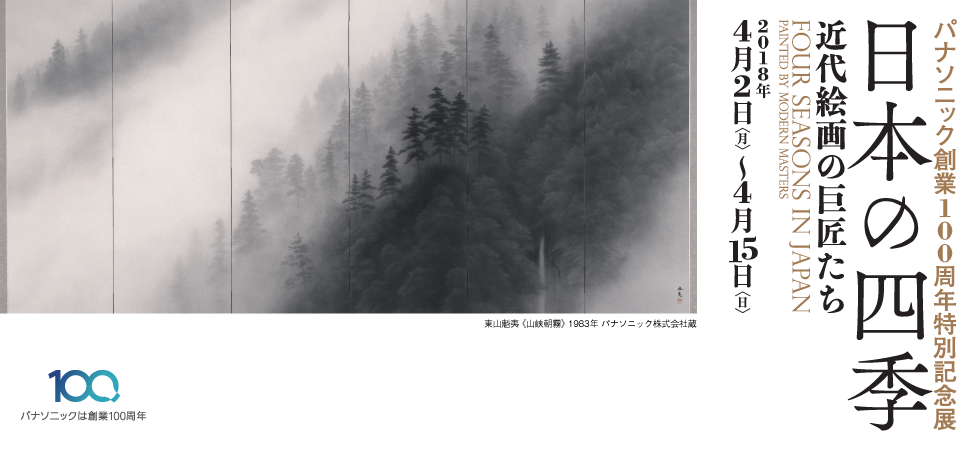Four Seasons in JapanPainted by Modern Masters
General Information
- Dates
- Apr. 2 – 15, 2018
- Hours
- 10 a.m. – 6 p.m. (Admittance until 5:30 p.m.)
- Closed
- Open every day during the exhibition period.
- Admission
- Adults: ¥500
Groups of 20 or more will receive a ¥100 discount per person.
Admission is free for children and students.
Admission is free for disability passbook holders and up to one accompanying adult.
- Organizers
- Panasonic
- Support
- Minato Ward Board of Education
- Planning
- Panasonic Shiodome Museum
Exhibition overview
This year marks the centennial of Panasonic, which was founded by MATSUSHITA Konosuke (1894-1989) in Osaka as the Matsushita Electric Housewares Manufacturing Works. To celebrate the occasion, the Panasonic collection of seasonally themed modern Japanese paintings will be displayed in its entirety for the first time.
Japanese artists have long found inspiration in the myriad ways that seasonal changes reveal themselves in not just the scenery, but also in the lives of the people. There are many Japanese paintings from the late 19th century onwards that depict landscapes, clothing, food, and other subjects with seasonal motifs. “The seasons,” MATSUSHITA once said, “reveal themselves to us in many forms that allow us to experience just the right amount tension and just the right amount of relaxation, as well as enjoy the blessings of nature. It is because the line between each season in Japan is so distinct that the Japanese developed their particular aesthetic. Our food, for example, constantly changes from season to season, nourishing our bodies while sharpening our senses and refining our characters with its rich variety.” The seasons, MATSUSHITA believed, bring both enrichment and peace to our lives.
The exhibition will feature about 60 pieces, from Japanese-style paintings to oil painting,that depict the beauty of Japanese seasonality through landscapes, plants, birds, and other subjects. Visitors will be introduced to modern Japanese masters such as KAWAI Gyokudo (1873 – 1957), TAKEUCHI Seiho (1864 – 1942), UMEHARA Ryuzaburo (1888 – 1986),DOMATO Insho (1891 – 1975), and HIGASHIYAMA Kaii (1908 – 1999).






